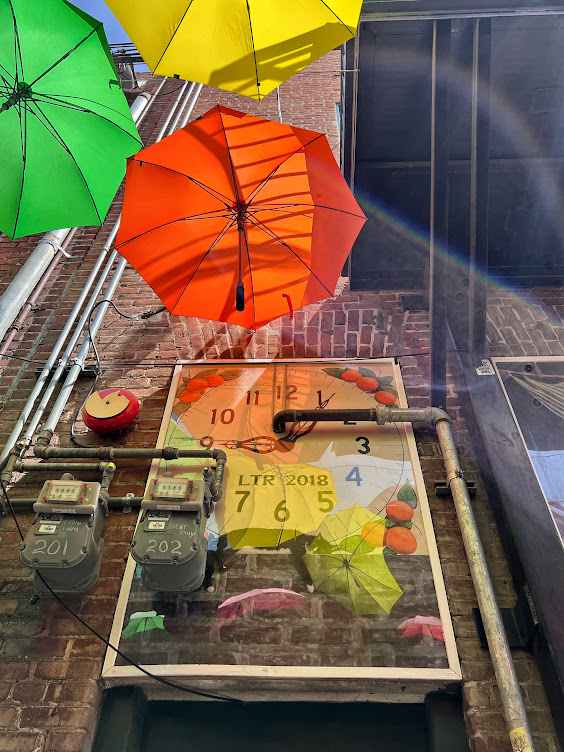Back to my day in Redlands for a moment. Lots of beautiful things to see (besides the clocks, the library, and the Lincoln Memorial Shrine.
Here is the newly-restored Millard Sheets mosaic titled “Redlands Heritage.” The building was originally a Home Savings and Loan, but now there is a restaurant in that space.

Like other streets with umbrellas which decorate (as this one in Zürich), Redlands has Umbrella Alley with cute shops and other artworks.



There are also many murals throughout the downtown. I spotted this one in an empty lot near the freeway.














































